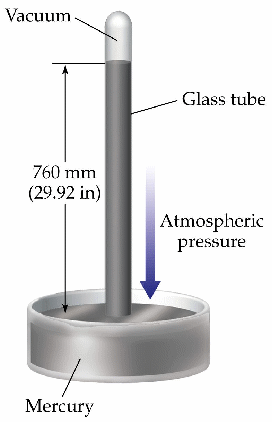A vacuum is a space with no atoms in it. There is not 'nothing' in a vacuum – there can be light passing through, but there is no matter. The definition above is a perfect vacuum but no vacuum is ever perfect. How close a vacuum approaches to a perfect vacuum is called it's 'quality'. Other things being equal, lower gas pressure means a higher-quality vacuum. A typical vacuum cleaner produces enough suction to reduce air pressure by around 20% - not a very high quality vacuum. Ultra-high vacuum chambers, common in chemistry, physics, and engineering labs, operate below one trillionth (![]() ) of atmospheric pressure and evacuate all but 100
) of atmospheric pressure and evacuate all but 100![]() . Outer space is an even higher-quality vacuum, containing of just a few atoms per cubic meter on average.
. Outer space is an even higher-quality vacuum, containing of just a few atoms per cubic meter on average.
A good quality vacuum can be produced in the laboratory with mercury, a (long) test tube and a glass container. The test tube is filled with mercury then inserted upside down into the glass container, the opening below the mercury level as shown. The space at the top of the tube will be a good quality vacuum, able to support a 76cm column of mercury because of the atmospheric pressure on the mercury surface in the glass container. This is called a torricellian vacuum.

Low quality vacuums are widely used. Every incandescent light bulb contains a low quality vacuum, and vacuums can be used to form seals to the decay of food.

